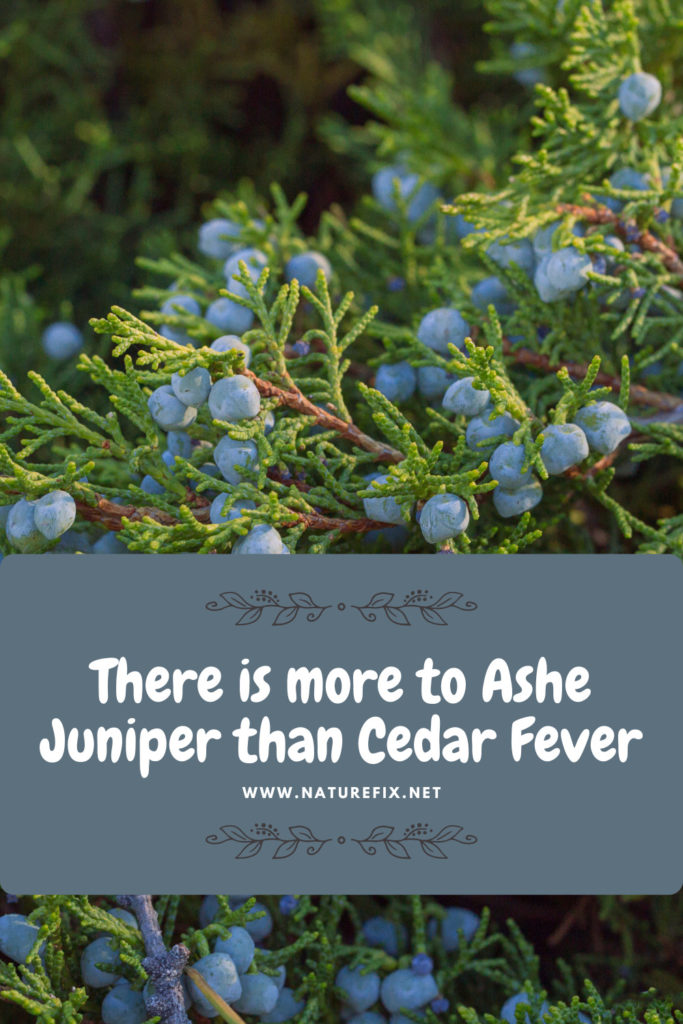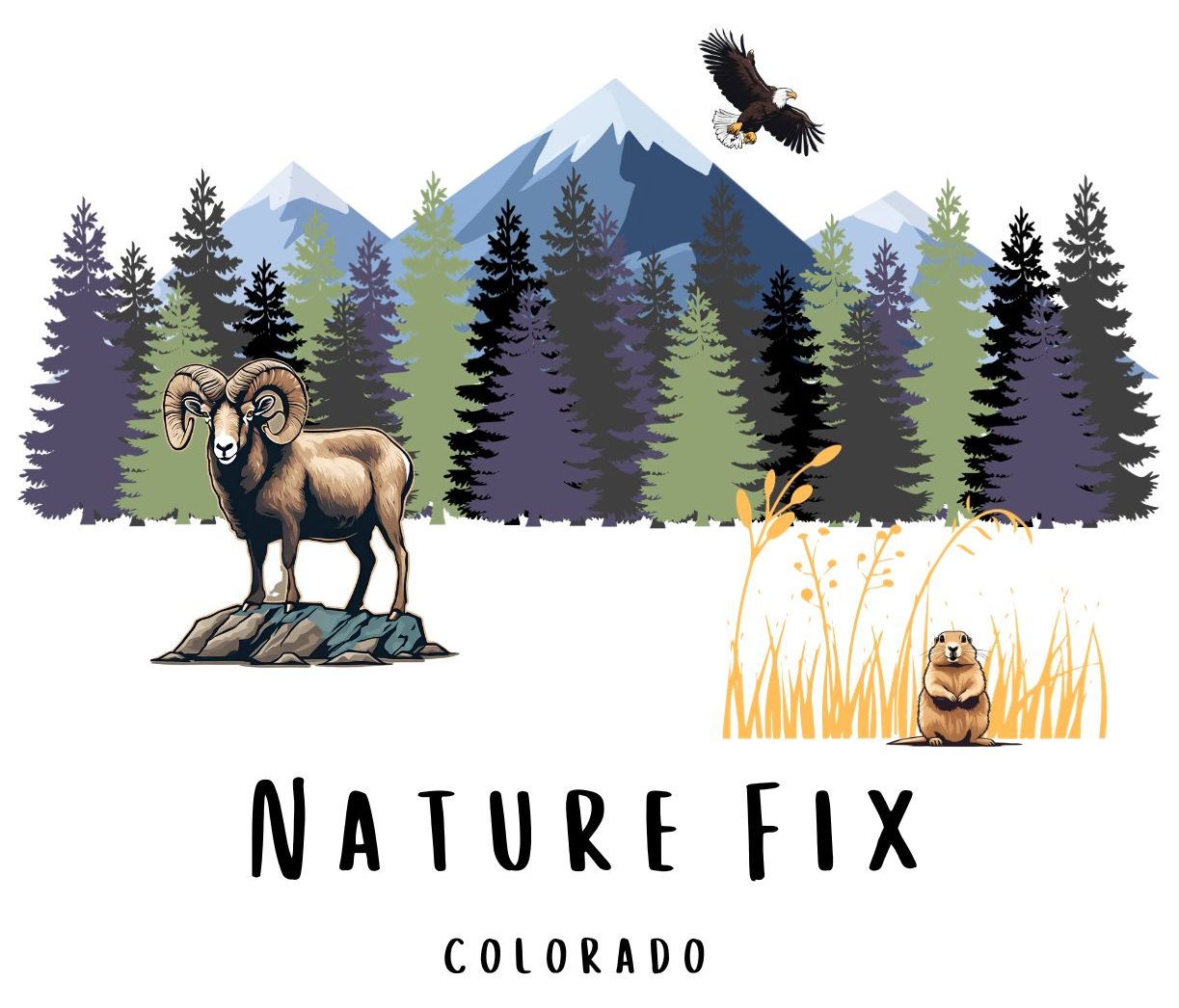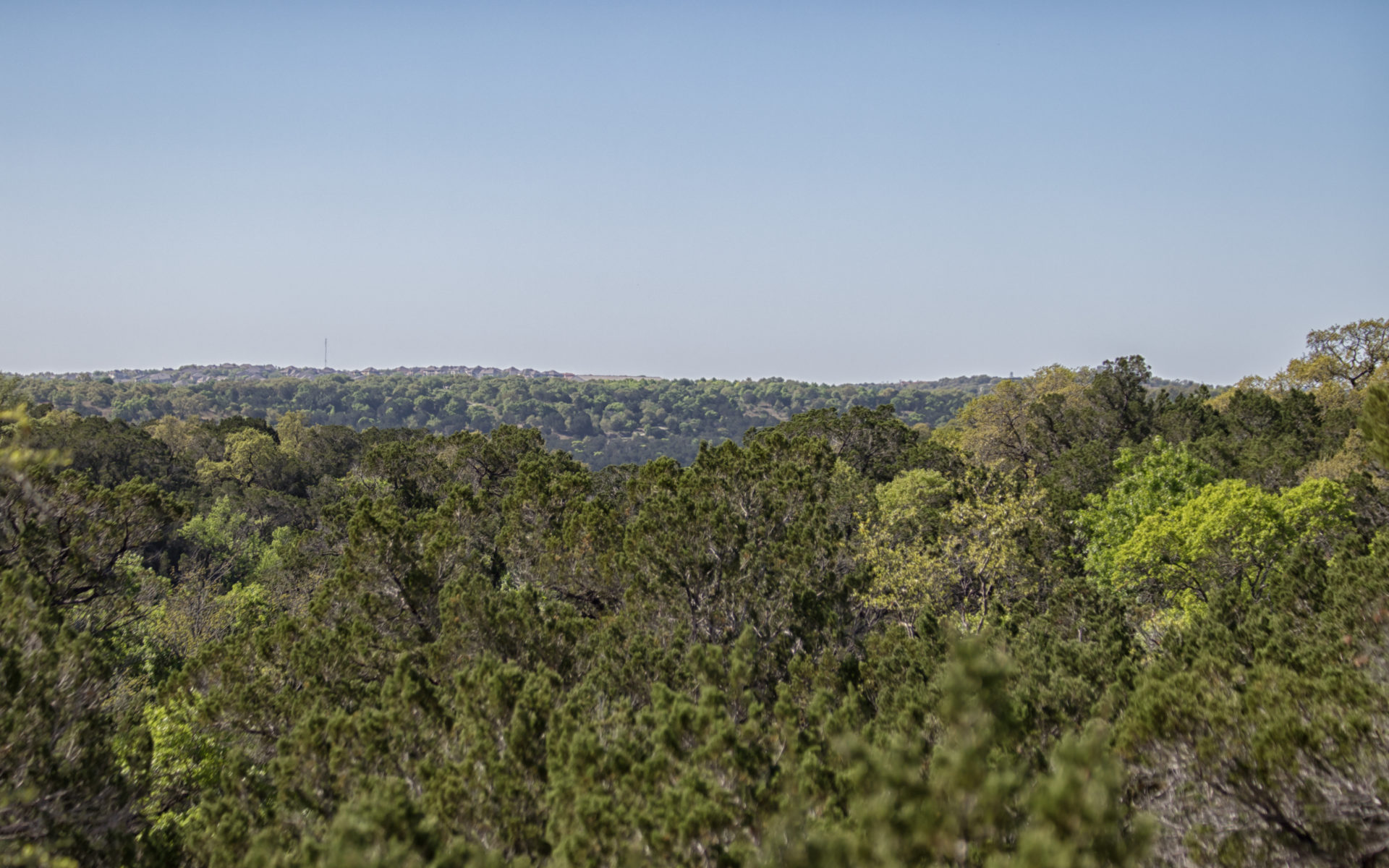In the Texas hill country, the changing of seasons is more subtle compared to some other areas of the US. Locals usually mark their winters with different events rather than snow and ice. One of these occurrences is Cedar Fever and the cedar allergy season. When the cedar trees pollinate in December through February, they wreak allergy hell on many folks.Cedar trees are ubiquitous in the Texas hill country, just like barbecue and tacos. These trees are found almost everywhere you look, and at times it might seem like the whole world in Austin is made up of cedar trees, as depicted in the top image.
These trees get a bad rap for a few reasons: many people are allergic to their pollen and for an entirely different reason, many landowners find them problematic (more on that later). However, these trees play a crucial role in our hill country eco-system. So while you’re sneezing, wiping your itchy eyes and wanting to cut down all the cedar in sight, let’s talk a little bit about what makes these trees remarkable & essential. We’ll also take a look at why they can be considered problematic.
A Little Backstory
In reality, the tree known as “cedar” is not a cedar tree, but a coniferous tree, called “Ashe Juniper” belonging to the Juniper family (Cupressaceae). William Ashe, a US Forest Service Forester, first collected a sample of this tree in 1924 in Arkansas, and it was named in his honor. Its scientific name is Juniperus ashei. Ashe Junipers are evergreen trees, typically having multiple trunks, and they seldom grow beyond 30 feet in height.
Ashe Junipers are native trees that have been present for an a long time. In fact, fossilized Ashe Juniper pollen discovered in Friesenhahn Cave near San Antonio dates back to 14-20 thousand years ago. Early visitors to the Balcones Canyonland area recorded thickly forested areas known as “cedar brakes.”
The Good

Ashe Juniper holds a lot of value for wildlife. Fox, ring tails, raccoons, coyotes, white-tailed deer and more than 19 species of birds forage this tree for berries.
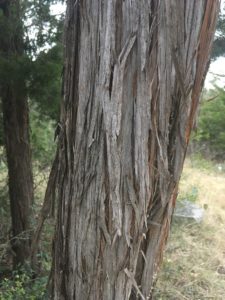
The shaggy bark of the mature Ashe Juniper trees is used by Golden-Cheeked Warblers to make their nests. These birds only breed in the Texas Hill Country and then return South America in the fall.
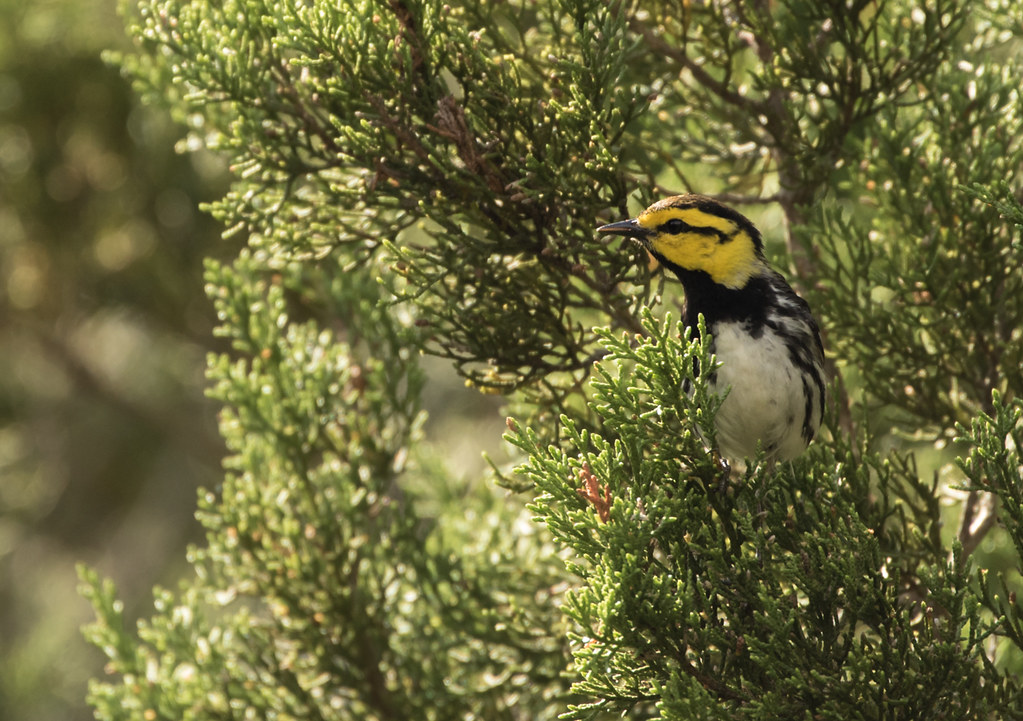

Because these trees are evergreen, they are used for cover in the winter and for nesting by animals in the spring. This tree is also the larval host for the Juniper Hairstreak.
From a Historical Perspective

These trees had a significant role in the history of the hill country area in Texas. Initially, Native Americans depended on the wood of these trees. Later, the Cedar Choppers relied on them for their livelihoods by chopping and selling cedar poles. The heartwood of Ashe Juniper is highly durable and resistant to decay, making it suitable for fence posts, telegraph poles, and railroad ties. Currently, Ashe Juniper oil is utilized in various fragrances, and the wood is still employed for fence posts.
The Problematic
Just because Ashe Junipers are native, doesn’t mean that they can’t be aggressive. Ashe Juniper will take over on over-grazed/disturbed land. Lack of fire and competition of herbaceous plants allows the Ashe Juniper saplings to get out of check and take over. Once the Ashe Juniper shades out the ground, then it really makes it hard for forbs and grasses to flourish, which are the plants that livestock prefer. It also out competes more preferable tree species such as the Live Oak. There is also some proof that dense Ashe Juniper growth will deter adequate water regeneration back to the aquifers. This is why land owners who are trying maintain grasslands for livestock find these trees problematic.
However, on the flip side, Ashe Juniper trees are evergreen, drought-tolerant and provide a great privacy screen and/or windbreak. They can and do grow on limestone, holding together the rock and soil that would otherwise erode during our flash floods. They can act as a nursery tree for some of our smaller important under story trees such as Madrone & Rusty blackhaw viburnam. Also of note, is that the leaf litter from the Ashe Juniper helps to create soil on top of the limestone, which anyone who has tried to dig a hole here in the Hill Country knows we need more of.
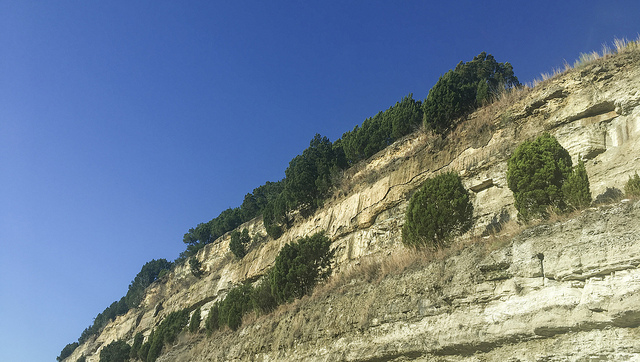
And Yes… There are Allergies
Ashe Juniper trees are dioecious, meaning that there are male plants & female plants. Female plants produce small blue juniper berries, the males produce the pollen. Ashe Juniper don’t start producing berries or pollen until they are around 10 to 20 years old. What triggers allergic reactions in so many people is the pollen that is released by the male trees. The pollen is released into the air in huge clouds by the male trees and is carried by the wind many miles, so chopping down all the cedar in your yard will not help. Best to see your doctor about remedies that will work for you during Cedar Fever season. It’s all part of living in the hill country, there are a plenty of good things but yeah, admittedly, Cedar fever isn’t so great. However, don’t blame the trees, they are just doing what they are supposed to do and what they have done for eons… propagate.
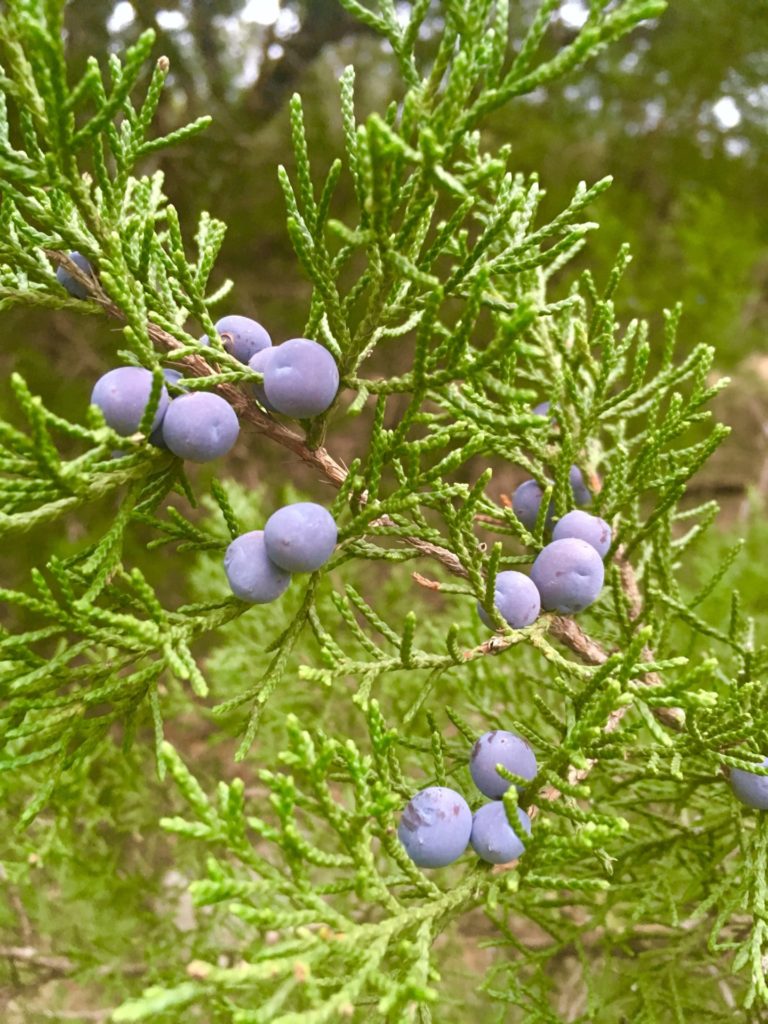
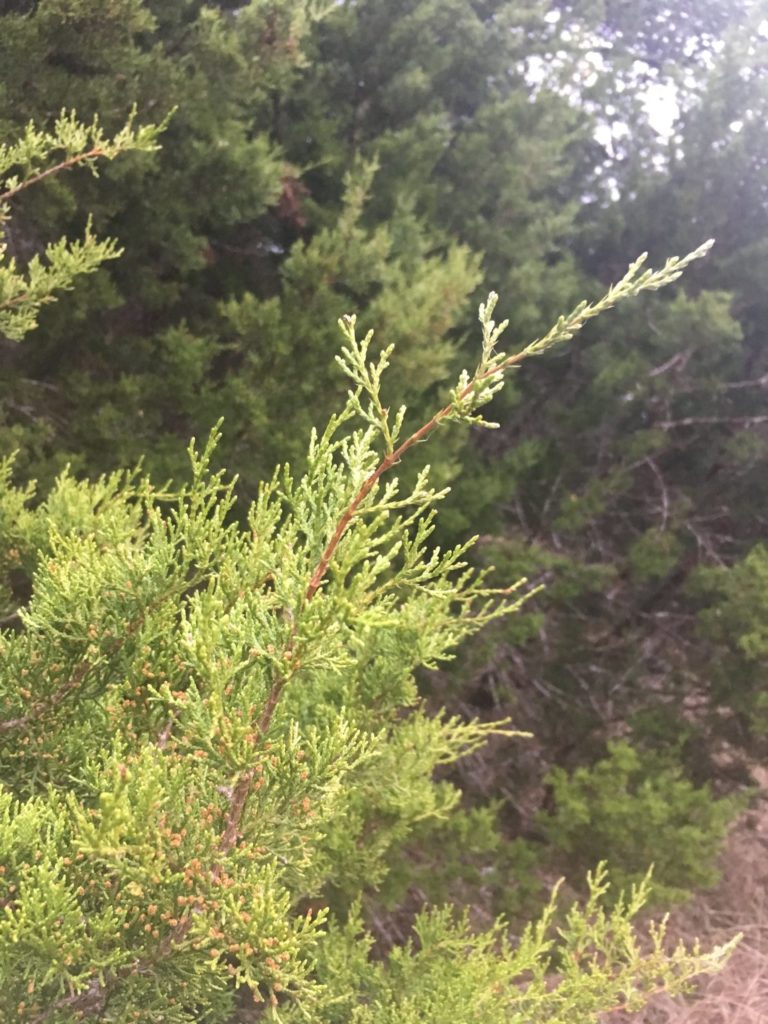
The Take Away
Many landowners struggle with what to do with cedar on their property. Like with almost everything in life, It depends on what you are trying to achieve. Cutting down all the Ashe Juniper is not beneficial for wildlife, but letting it take over isn’t great if you are a rancher and need to keep your grassland for livestock. When attending a land stewardship workshop at Bamberger Ranch, known for their outstanding land stewardship in Texas, they shared that they cut down most of the Ashe Juniper saplings, and 2nd growth trees, but groom and leave all mature Ashe Juniper Trees, cutting them into an appealing lollypop shape. This allows more sun to hit the ground and encourages the growth of more native forbs and grasses, but also allows wildlife to benefit from the trees in the ways they need to.
If you sit and pick a mature Ashe Juniper to stare at for a few minutes, you can’t help but feel a profound sense of time as you look at its worn bark and sturdy stature. These trees are true native Texans, tough, determined and an essential part of its historical and future identity.
Sources:
- Juniperus ashei – Wikipedia
- Dispelling Myths of Ashe Juniper – Jim & Lynne Weber
- Juniper Ecology – Alan McGinty
- White Juniper Fungus Biology – Bill Dodd
- Juniper Biology & Management in Texas – Texas Agriculture Extension Service
- Ashe Juniper Is Really More Good Than Bad – Jan McAuliffe and Mary Dunn, NPSOT Beorne Chapter
- The War on Cedar – Joe Nick Patoski – Texas Monthly
Never miss a Nature Fix post! Get access to custom content!
